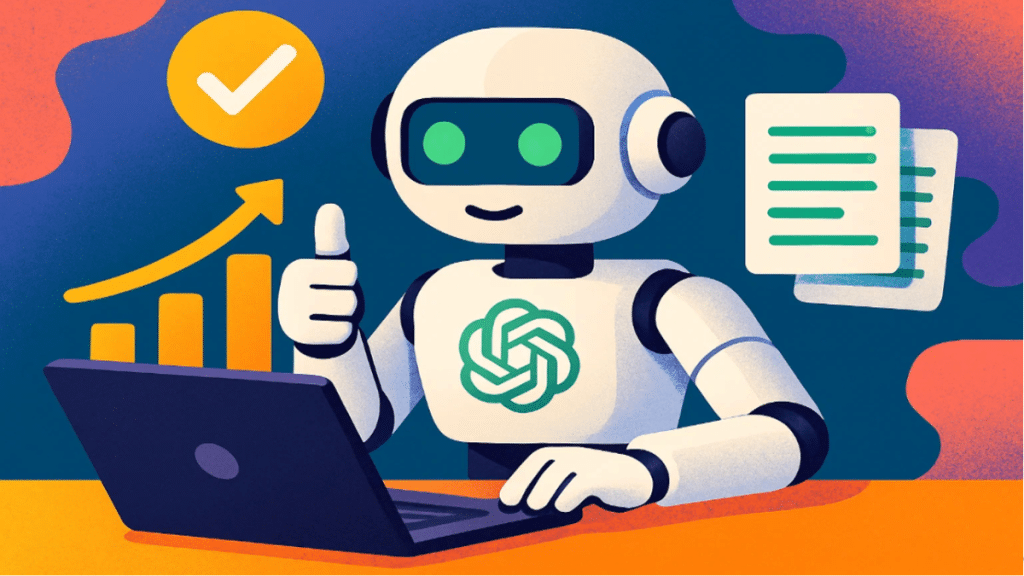Why the Next Leap in AI Isn’t Just About ChatGPT-5 – It’s About Unification
Artificial intelligence tools like ChatGPT, Claude, and Gemini are getting faster, smarter, and more connected. But OpenAI’s announcement about ChatGPT-5 revealed something more important than just model performance: they’re merging everything into one assistant. One interface. One memory. One system.
No more bouncing between plugins, tools, APIs, or browser tabs.
And yet—if you’ve been using Chatronix, you’ve already been living in that future. While OpenAI prepares its single-chatbot vision, Chatronix has quietly unified access to all top models—GPT-4, Claude, Gemini, Grok, Perplexity, and DeepSeek—inside one clean workspace.
If you’re building, researching, coding, or selling with AI, here’s what GPT-5 changes—and why Chatronix might still be the better place to work.
GPT-5 From OpenAI Will Merge All Core Capabilities
GPT-5 isn’t just a new LLM. It’s the operating system for OpenAI’s full ecosystem of tools.
Here’s what’s being merged into one chatbot:
- ChatGPT (text generation)
- DALL·E (image generation)
- Whisper (voice input + output)
- Code Interpreter (Python/JS execution)
- Memory (cross-session personalization)
- Browse (real-time web access)
The new interface is already being tested with select users. You don’t open tools. You stay in one chat thread. The AI remembers what you need, rewrites in your voice, references previous files, and runs code without switching tabs.
This is no longer “prompting.” It’s working side-by-side with an AI operating partner.
Why Chatronix Is Already Delivering That Experience
While OpenAI focuses on consolidating its own tools, Chatronix took a more radical approach: let the user access all the best models—together.
Here’s how Chatronix beats GPT-5 at its own game (today):
- You can run the same task across GPT-4, Claude, Gemini, Grok, Perplexity, and DeepSeek
- You get side-by-side outputs instantly—no retyping, no switching tabs
- You can run up to 6 AI models in one chat, with shared context
- Built-in Turbo Mode helps you test faster with prompt chaining and reuse
- All users get 10 free requests per day, no credit card needed
While OpenAI limits you to GPT-only logic, Chatronix lets you compare GPT vs Claude for tone, vs Gemini for factuality, vs Grok for speed—and then choose the best one for your workflow.
I moved my workflow inside Chatronix, where I can compare GPT-4, Claude, Gemini, Grok, and Perplexity in one unified chat – Chatronix.ai
If GPT-5 is a smarter hammer, Chatronix is the full toolbox.
Table: GPT-5 vs Chatronix AI Platform
| Feature | GPT-5 (OpenAI) | Chatronix AI Suite |
| Unified tools | Yes | Yes (via model integration) |
| Memory and personalization | Yes (if enabled) | Yes (prompt history + reuse) |
| Voice input/output | Yes | Not yet (planned) |
| Multi-model comparison | No | Yes (GPT-4, Claude, Gemini, Grok etc) |
| Real-time web search | Yes | Yes (via Perplexity integration) |
| Visual generation | Yes (DALL·E) | Yes (via Gemini + Claude) |
| Side-by-side model output | No | Yes |
| Turbo Mode (multi-run prompts) | No | Yes |
| Access to Claude/Gemini/Grok | No | Yes |
| Free tier | Limited | 10 free requests daily |
How Founders Are Already Working This Way
My own workflow changed entirely when I moved everything into Chatronix.
Before:
- I would brainstorm in ChatGPT
- Then rewrite in Claude for better tone
- Then verify with Gemini
- Then grab sources from Perplexity
- Then polish the result manually
Now:
- I enter one task
- Run it across all models with one click
- Get side-by-side answers
- Choose the strongest output
- Reuse the best parts with Turbo Mode
- And the entire session is saved in Chatronix
I haven’t written from scratch in weeks.
The Real Shift: From Prompting to Delegating
The core idea behind GPT-5 is that AI should be self-sufficient, not just reactive.
You won’t need to think in prompt syntax anymore. Instead of asking:
“Write me a 100-word sales email for startup founders”
You’ll say:
“Help me land 3 new clients by Friday using email and LinkedIn outreach”
And the AI will:
- Draft outreach copy
- Recommend angles based on your audience
- Track replies
- Rewrite based on tone feedback
- Remind you when to follow up
That level of delegation is only possible when the AI has memory, task continuity, tool integration, and output evaluation—all in one thread.
Chatronix lets you simulate that right now using a blend of AI models, prompt stacks, and shared session memory.
Best Practices to Future-Proof Your Workflow
If you’re preparing for GPT-5—or want to beat it—here’s how I’d work today:
1. Run tasks across multiple models
Even GPT-5 won’t always be the best at everything. Claude often writes more human. Gemini explains faster. Perplexity cites better.
2. Store prompt stacks for repeatable workflows
Don’t start from zero every day. Save your top-performing prompts, and run them across new inputs.
3. Use Turbo Mode to test variations fast
Chatronix lets you generate 5 prompt variations and compare results with one click.
4. Keep your tone consistent with Claude
Claude is still the best model for storytelling and emotional calibration. Use it to humanize GPT-outputs.
5. Preview for AI-detection before publishing
Chatronix helps flag robotic output. Make sure what you publish sounds like you—not like a bot.
Final Thought
GPT-5 will be huge. But don’t forget: OpenAI’s vision is still GPT-only.
If you want to truly work like the future—across all models, all styles, all strengths—you don’t have to wait.
I’m building everything inside Chatronix: my emails, my decks, my copy, even my pitches. No switching tabs. No guessing if Claude would’ve said it better. I just test, compare, choose, and go.
If GPT-5 is the unified chatbot for OpenAI, Chatronix is the unified workspace for your AI brain.
And it’s available now.
